|
|
|
Sort Order |
|
|
|
Items / Page
|
|
|
|
|
|
|
| Srl | Item |
| 1 |
ID:
111039
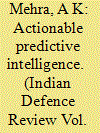

|
|
|
| 2 |
ID:
119539
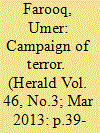

|
|
|
| 3 |
ID:
084628
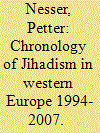

|
|
|
|
|
| Publication |
2008.
|
| Summary/Abstract |
Considering Europe's long history of terrorist violence by separatist, leftist and rightwing groups, terrorism by militant Sunni Islamists has until recently been a marginal phenomenon. However, empirical data presented in this chronology suggests it constitutes a growing and increasingly lethal threat, and a worrisome trend in the context of increased tensions between the Muslim world and the West in the wake of 9/11 and the U.S.-led invasions of Afghanistan and Iraq, which needs to be dealt with on many levels-socially, politically, and economically. The current chronology is meant to serve as a tool for conducting academic research on the scope of the threat, and for mapping incidents that might be surveyed in more depth to create a better understanding of its organizational, operational, and motivational patterns.
|
|
|
|
|
|
|
|
|
|
|
|
|
|
|
|
| 4 |
ID:
126977
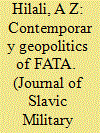

|
|
|
|
|
| Publication |
2013.
|
| Summary/Abstract |
In the post-9/11 era, the international strategic and political culture changed. The notion of 'global Jihad' became popular. The prevalence terrorist violence legitimized US interventions in Afghanistan. It further expanded to Pakistan's Federally Administered Tribal Areas (FATA) making it the chessboard of great power politics. The United States and NATO have launched military operations against the Taliban and al-Qaeda network. It blamed Pakistan for providing a safe haven to militants in its tribal belt. It is a fact that foreign intervention has become the main catalyst for militancy. The War on Terror is a 'bleeding wound' for Pakistan and people perceive that Islamabad should disassociate from the US-led war because it is against the national interest of the country.
|
|
|
|
|
|
|
|
|
|
|
|
|
|
|
|
| 5 |
ID:
119548


|
|
|
| 6 |
ID:
168389
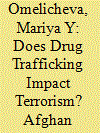

|
|
|
|
|
| Summary/Abstract |
The relationship between drug trafficking and terrorism remains a contentious issue. While some assert that drug trafficking is a strong predictor of terrorism, others contest this observation. This study focuses on the impact of the Afghan opioid trade on terrorist violence in Central Asia, a region of drug transit states. We employ Geographic Information Systems–enabled visualizations of the drug trade and terrorism as well as statistical tests to study the drug–terror relationship at the subnational level. Our findings lend support to the argument that the drug trade facilitates terrorism, but we also find that the drug–terror relationship is multifaceted, complex, and intimately linked to the state.
|
|
|
|
|
|
|
|
|
|
|
|
|
|
|
|
| 7 |
ID:
097165


|
|
|
|
|
| Publication |
2010.
|
| Summary/Abstract |
It is widely believed that the current wave of religiously inspired terrorism will persist for the foreseeable future. Is this necessarily the case? This article asserts that this present wave may be cresting, much like previous waves in the modern history of terrorist violence. Further, the article goes on to forecast not an end to terrorism in general, but the likely emergence of still new manifestations of terrorist violence.
|
|
|
|
|
|
|
|
|
|
|
|
|
|
|
|
| 8 |
ID:
104702


|
|
|
| 9 |
ID:
119442
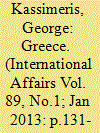

|
|
|
|
|
| Publication |
2013.
|
| Summary/Abstract |
Greece has one of the most sustained problems of political terrorism anywhere in the world. From the mid-1970s to the present, the country's political and socio-economic institutions have been confronted by systematic terrorist violence mainly at the hands of revolutionary guerrilla groups.
The long story of Greek terrorism was thought to have ended in the summer of 2002 with the collapse of the country's premier terrorist group and one of Europe's longest-running gangs, the notorious Revolutionary Organization 17 November (17N). 17N's dismantling and imprisonment, rather than demoralizing and emasculating the country's armed struggle movement, led instead to the emergence of new urban guerrilla groups and an increase and intensification of revolutionary violence.
In consequence, the article places Greek extremist violence in a broader political and cultural perspective and explains why it has become a permanent fixture of national public life.
|
|
|
|
|
|
|
|
|
|
|
|
|
|
|
|
| 10 |
ID:
103025
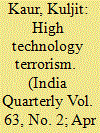

|
|
|
| 11 |
ID:
172820


|
|
|
|
|
| Summary/Abstract |
Conventional knowledge and early academic work on lone-actor terrorists has popularized the concept that they radicalize, operate, plan, and execute plots in relative anonymity, with little connection to formal or more organized terrorist groups and networks. However, recent scholarship has increasingly challenged the notion of the “loneliness” of lone-actors. In order to further empirically test this notion, this article uses social network analysis to examine the ideological, signaling, and support networks of two case studies of lone-actors during the twenty-four months prior to the commission of their first act of terrorist violence.
|
|
|
|
|
|
|
|
|
|
|
|
|
|
|
|
| 12 |
ID:
101512
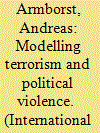

|
|
|
|
|
| Publication |
2010.
|
| Summary/Abstract |
This article introduces some conceptual thoughts to the study of terrorism and provides answers to questions such as: can terrorism be studied like other crime phenomena? What are the conceptual and methodological challenges when framing terrorism as crime or military conflict? What are the epistemological consequences of studying a highly politicized object? What makes terrorist violence different from other forms of political violence such as guerrilla warfare and insurgency? For this purpose, in the first part of the article a review will be conducted to ascertain what criminologists have contributed to the conception of terrorism. In the second part a model of terrorism is elaborated that depicts the crucial parameters of this form of political violence and thereby bypasses some of the existing conceptual difficulties and misconceptions. We learn from the various definitions of terrorism that the singularity of terrorism has something to do with the victim, the purpose and the consequences of violence. Specifically the fact that terrorists are as indifferent to the various targets as they are to the various political consequences of their attack is what distinguishes terrorism from related phenomena of political violence.
|
|
|
|
|
|
|
|
|
|
|
|
|
|
|
|
| 13 |
ID:
165694
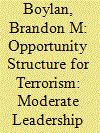

|
|
|
|
|
| Summary/Abstract |
Why does terrorist violence escalate from some ethnic groups but not others? According to theoretical insights, many groups endure conditions that should spur on terrorist campaigns, but in reality only some carry them out. In contrast to studies emphasising motivations, this article constructs a framework centred on opportunity structures that contributes to our understanding of the rise of terrorism waged along ethnic lines. It argues that beyond grievances or other motivations, terrorist campaigns develop from communities when moderate political leaders depart from their positions in nationalist movements, causing terrorists to fill the subsequent power vacuum, while little terrorism occurs when leaders do not relinquish the nationalist agenda. This argument is evaluated with evidence from the Tamil and Muslim cases in the context of the Sri Lankan Civil War. Tamil United Liberation Front leaders left the Tamil nationalist movement in the early 1980s, enabling the Liberation Tigers of Tamil Eelam’s rise to dominate the nationalist agenda for three decades, while the Sri Lanka Muslim Congress did not relinquish the Muslim cause, which in part precluded the normalisation of violence in the community.
|
|
|
|
|
|
|
|
|
|
|
|
|
|
|
|
| 14 |
ID:
145287
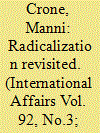

|
|
|
|
|
| Summary/Abstract |
For more than a decade, ‘radicalization’ has been a keyword in our understanding of terrorism. From the outset, radicalization was conceived of as an intellectual process through which an individual would increasingly come under a spell of extremist ideas. This ideological understanding of radicalization still prevails. In a 2015 speech on extremism, British Prime Minister David Cameron, for instance, claimed that the ‘root cause of the threat we face is the extremist ideology itself’. But the way we understand radicalization has specific consequences for the way we manage and fight the scourge of terrorism. Considering recent events, including the November 2015 Paris attacks, the present article sets out to reassess the above-mentioned intellectualist understanding of radicalization and come up with new suggestions as to how radicalization may be understood today. Initially, the article suggests that ideology is not necessarily a precondition for violence, but that a prior experience with violence is more often a precondition for engaging an extremist ideology. Such experience with violence can be both domestic and international, obtained in Europe or Syria and other conflict zones. In the second part of the article it is argued that although radicalization is often conceived of as an individual process, pathways towards terrorism are inherently social and political. Finally, the article argues that by stressing the importance of ideology and ideological processes, concepts of radicalization have abstracted away from another factor that is pivotal for understanding pathways towards terrorist violence: the skills and capacities of the body.
|
|
|
|
|
|
|
|
|
|
|
|
|
|
|
|
| 15 |
ID:
087818
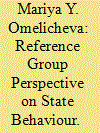

|
|
|
|
|
| Publication |
2009.
|
| Summary/Abstract |
For over a decade Estonia has been untouched by terrorist violence. However, notwithstanding the lack of a viable terrorist threat, the Estonian government adopted extensive counterterrorism measures. What explains the scope of Estonia's counterterrorism measures? The main proposition of this article is that the content of states' counterterrorism policies is shaped by the types of responses adopted by their reference groups. The evidence examined in the study demonstrates that Estonia's primary reference groups, NATO and the EU, have influenced the republic's counterterrorism programme. An unattractive target to terrorists, Estonia adopted broad counterterrorism responses to defend indivisible Euro-Atlantic security and to protect democratic values that terrorists attempt to destroy.
|
|
|
|
|
|
|
|
|
|
|
|
|
|
|
|
| 16 |
ID:
137961
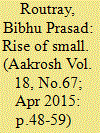

|
|
|
|
|
| Summary/Abstract |
'Size matters' is no longer the most suitable expression that defines the insurgency movements in India's North-Eastern region.
|
|
|
|
|
|
|
|
|
|
|
|
|
|
|
|
| 17 |
ID:
154978


|
|
|
|
|
| Summary/Abstract |
This study characterizes trends in the frequency and characteristics of terrorist attacks in child-serving educational institutions around the world, examining the specific vulnerabilies of children and schools with regard to terrorist violence, as well as the various impacts that violence has on children, communities, and societies. Following the analysis of available data on terrorist attacks against educational institutions, vulnerabilities, and impacts, the study concludes with a discussion of what still needs to be understood in the intersection of child vulnerability and terrorism, and provides recommendations for improving resilience to terrorist attacks against child-serving educational institutions.
|
|
|
|
|
|
|
|
|
|
|
|
|
|
|
|
| 18 |
ID:
130938
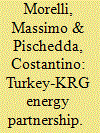

|
|
|
|
|
| Publication |
2014.
|
| Summary/Abstract |
Ten years after the U.S. invasion and two years after the complete withdrawal of American forces from its soil, Iraq faces a number of challenges to its long-term stability and development. These range from corruption to poor public services, from rising terrorist violence to ethnosectarian tensions in the context of a complex power-sharing system. An important, but often overlooked, aspect of Iraq's political scene concerns the dispute between the federal government and the Kurdish Regional Government (KRG) over the management of the country's and the Kurdish region's natural resources and over appropriate revenue-sharing mechanisms. The parties have been stuck in a costly political stalemate for the past few years, as the absence of a federal hydrocarbon law has discouraged international investment in Iraq's natural resources, and oil extracted from KRG-controlled fields has had only intermittent access to international markets.
|
|
|
|
|
|
|
|
|
|
|
|
|
|
|
|
|
|
|
|
|